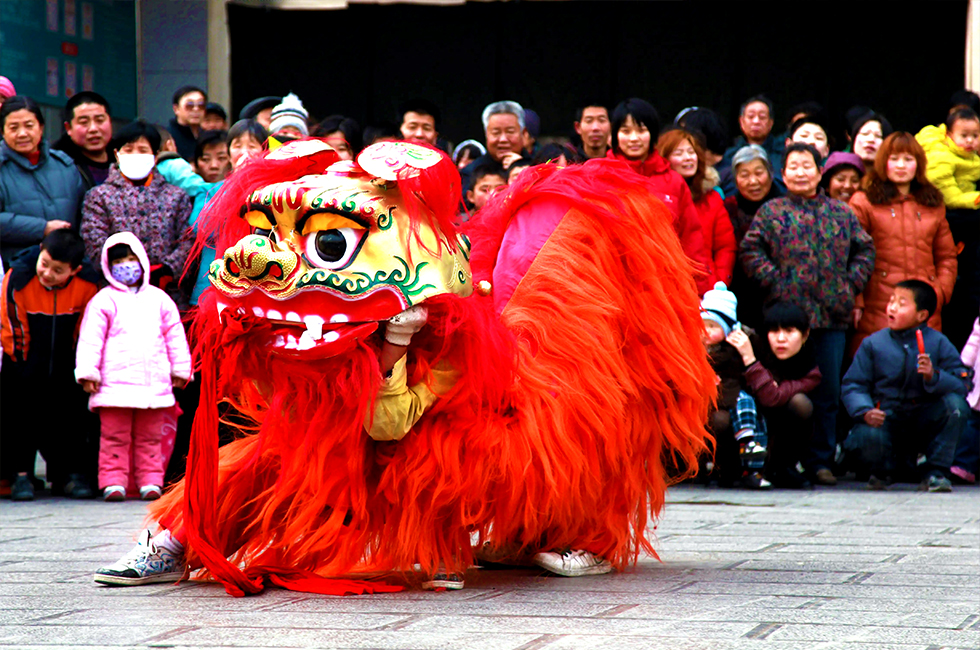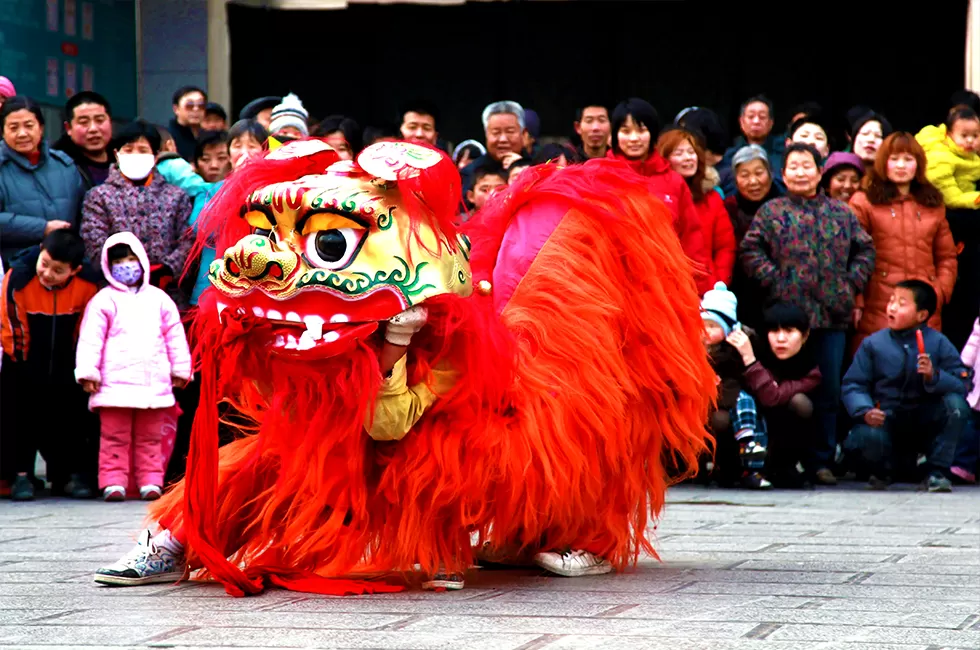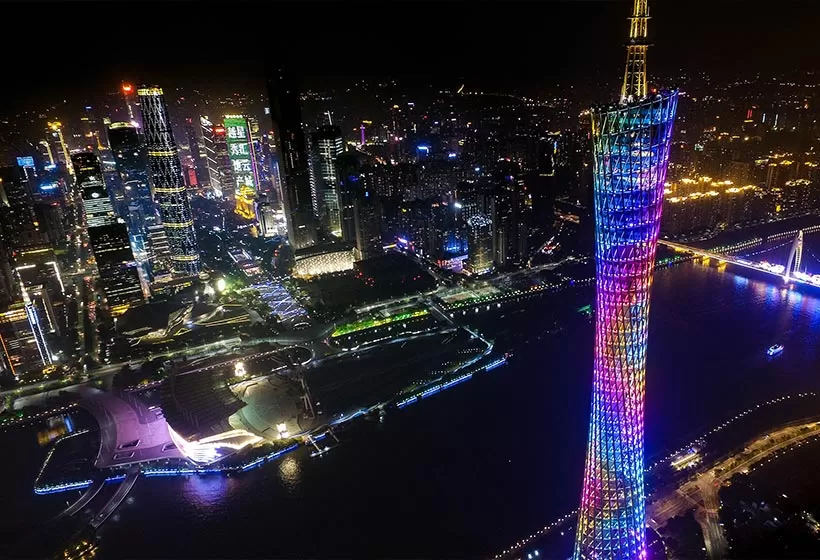Short Introduction to Foshan Local Culture: History, Nation, Diet, Kung Fu,Festival etc
Foshan, located in the central and southern part of Guangdong Province, lies in the heart of the Pearl River Delta. It borders Guangzhou to the east, Zhaoqing and Yunfu to the west, Jiangmen and Zhongshan to the south, and Qingyuan to the north. Foshan is also close to Shenzhen, Hongkong, and Macau, making it easily accessible by various transportation routes. As a prefecture-level city under Guangdong Province, Foshan covers an administrative area of 3,797.72 square kilometers and has a permanent population of 9.55 million.
Foshan is a National Historical and Cultural City of China. It is renowned as the birthplace of Dragon Boat Racing and Lion Dance culture, both of which are integral to Chinese traditions. Foshan is also recognized as the origin of Chinese martial arts, Cantonese opera, and one of the key centers for the development of Lingnan culture, particularly the Guangfu culture. With its rich cultural heritage, Foshan continues to be a vibrant hub for these traditional art forms and practices.
Brief History
Around 6,000 years ago, the ancestors of Foshan created the Double-Shoulder Stone Tool Culture on Xiqiao Mountain, making it one of the two major stone tool manufacturing sites in China during the Neolithic era. This marked the beginning of the "civilization history of the Pearl River." Foshan has witnessed the passage of time, with over 1,300 years of city-building history and the rise and fall of various dynasties, each leaving its mark on the city's rich cultural and historical landscape.
During the Spring and Autumn and Warring States periods, Foshan was part of the Baiyue region. In the Qin and Han dynasties, it belonged to the Panyu County of Nanhai Commandery. By the Jin Dynasty, the area had developed into a significant agricultural and fishing settlement.
In 590 AD, during the Sui Dynasty, it was renamed Nanhai County. In the Tang Dynasty, during the second year of Emperor Taizong's reign (628 AD), locals discovered three bronze Buddha statues and a Buddhist inscribed stone tablet on Tapo Hill. Seeing this as a divine sign, they built a temple and renamed the area "Foshan," meaning "Mountain of Buddha," a name that reflects the city's rich Buddhist heritage. In 1452 (the third year of the Ming Dynasty's Jingtai period), Foshan was officially honored as "Loyal and Righteous Township," under Nanhai County. In the same year, Shunde County was established, with the name symbolizing "following the will of heaven."
In 1475 (the 11th year of Ming Chenghua's reign), Gaoming County was established, named after the original Gaoming Inspection Office. Along with Jingdezhen, Zhu Xian Town, and Hankou, Foshan was ranked as one of the Four Famous Towns in China.
In 1819 (the 24th year of the Qing Jiaqing period), Sanshui County was established, named for the convergence of three rivers.
In 1912, during the early days of the Republic of China, the Nanhai County Government was set up in Foshan Town. On October 15, 1949, the People's Government of Foshan was officially established, marking a new chapter in the city's modern history.
Cantonese Culture
Foshan is one of the main birthplaces of Guangfu culture and is also renowned as the origin of Cantonese opera and martial arts. The city boasts a rich historical and cultural heritage, with abundant folk cultural resources. Foshan has preserved a large number of intangible cultural heritages that reflect the essence of Lingnan culture and the distinctive characteristics of the Pearl River Delta.
Since the Qin Dynasty, immigrants have continuously moved to the Lingnan region, with the periods of the late Song Dynasty, early Yuan Dynasty, late Ming Dynasty, and early Qing Dynasty witnessing the highest influx of migrants. As a result, this city with a rich immigrant background is home to diverse traditional art forms, including Cantonese opera, dragon boat songs, paper cutting, and more.
Cantonese opera, the largest local opera in Guangdong, is known for its simple and rugged style. It incorporates elements of Cantonese music, Cantonese embroidery, ivory carving, ceramics, clay sculptures, and other local art forms, making it a highly cohesive and influential cultural expression.
Chinese Kung Fu
Foshan Kung Fu is a gem of the city's traditional culture. In 2004, it was awarded the title of "City of Chinese Martial Arts" by the Martial Arts Association, making it the only city in China to receive this honor. When people around the world think of kung fu, they immediately associate it with China, and within China, mentioning martial arts inevitably leads to Foshan.
When you think of Foshan, do you picture Bruce Lee with his iconic nunchaku, Wong Fei-hung with his legendary No Shadow Kick, or the grandmaster of Wing Chun, Ip Man?
The history of martial arts in Foshan goes back a long way. Practicing martial arts not only strengthens the body but also serves to protect one's family from external threats. As early as the Spring and Autumn and Warring States periods, the Baiyue people were known for their strong martial skills. During the Tang and Song dynasties, migrants from the Central Plains brought martial arts traditions, which blended with the local martial arts of the Baiyue people. In modern times, Foshan became globally known for the No Shadow Kick of Wong Fei-hung, the Wing Chun style of Ip Man, and the Jeet Kune Do of Bruce Lee, making it the martial arts "capital" of the world.
Currently, Foshan has a population of over 600,000 martial artists. The city is home to 52 different martial arts styles, including Cai Li Fo, Hung Gar, and Wing Chun, with 297 registered martial arts schools. Foshan's martial arts influence has spread to 176 countries and regions worldwide, with over 600 martial arts academies and more than 10 million practitioners globally.
Lingnan Architecture
Foshan's traditional architecture is represented by the Huo'er House. The distinctive feature of Huo'er House is its roof, which has curved, ear-shaped structures at the top. These curves symbolize wealth and good fortune, representing an abundance of resources and a prosperous life. These homes were traditionally built only by families with noble titles or official positions, such as in the Daqitou Ancient Village in Sanshui, Foshan, which was funded by Empress Dowager Cixi to honor Zheng Shaozhong, the Governor of Guangdong's Naval Forces.
Moreover, the region is renowned for its exquisite Lingnan gardens, including celebrated sites like Qinghui Garden and Liang Garden, which embody the perfect fusion of natural beauty and artistic design, adding to the area's rich cultural legacy.
Language
Foshan dialect, a variety of Cantonese, is also known as "Foshan tone". It is one of the main components of Cantonese and ranks as the fourth largest dialect in Guangdong, after Hakka, Baihua, and Chaozhou. The Foshan dialect is highly similar to Guangzhou Cantonese in terms of pronunciation, vocabulary, and grammatical structure, reflecting the deep cultural and linguistic ties between the two cities.
It is mainly used in Foshan's Chancheng District (Foshan dialect), Nanhai District (Nanhai dialect), and Shunde is closer to Guangzhou, so it is basically a pure Cantonese-speaking area.
Special local Festivals
Foshan Kung Fu Festival(January 21): Held at the Foshan Creative Industry Park, this month-long event celebrates Foshan's traditional kung fu, culinary skills, manufacturing craftsmanship, and more. The festival features over a hundred activities, showcasing the city's rich cultural heritage and modern achievements.
Qiuse Parade Festival (1st to 3rd in November): It is typically held in Zumiao Street of Chancheng District. The event has a 600-year history and is an annual cultural celebration of Foshan's rich history, traditions, and customs. The parade often includes elements like the lion dance, dragon dance, Chaoshan Yingge Dance, traditional martial arts performances, and Cantonese opera.
Zu Miao Bell Chiming(Spring Festival): Held at the Foshan Ancestral Temple, this ceremony involves the ringing of bells to pray for blessings, symbolizing the start of the new year and hopes for a prosperous life.
Ancient Town Lantern Festival: As part of the Foshan (Chancheng) Lingnan New Year Customs Festival, the Ancient Town Lantern Festival showcases a variety of exquisite lanterns and decorations, creating a vibrant and festive atmosphere.
Xing Tongji Festival (held during the 15th and 16th days of the first lunar month) originated during the late Ming and early Qing dynasties, with a history spanning over 400 years. During this festival, every household in Foshan carries windmills, shakes wind chimes, and holds bundles of lettuce as they walk across Tongji Bridge, praying for peace and good fortune in the coming year. As one of Foshan's landmarks, Tongji Bridge has witnessed countless prayers and blessings from travelers throughout the centuries.
Diet Style and Culinary Tastes
Foshan cuisine is part of Cantonese cuisine, specifically the Guangzhou style, and is one of the important origins of this culinary tradition. As the saying goes, "The art of dining is in Guangzhou, the essence of flavor is in Foshan", Signature dishes include Jun'an steamed pork, Shunde fish sashimi, Foshan pig's trotters, Zhuhou chicken, and Shiwang tofu. Foshan snacks, with their long history and variety, are particularly famous, including classics like Xiqiao cake, Foshan nine-layer cake, double-skin milk, and fried milk. The vibrant food night markets and traditional restaurants provide a rich culinary experience that reflects the region's cultural heritage.
Cultural Heritage
Intangible Cultural Heritage: Foshan boasts 15 national-level, 56 provincial-level, and 144 municipal-level intangible cultural heritage items. Some of the most representative cultural treasures include Cantonese opera, Foshan Wing Chun, dragon boat races, Guangdong lion dance, Shiwang pottery sculptures, the art of making double-skin milk, and the Qiuse Parade. These cultural practices are not only iconic but also have strong popular roots, continually thriving and evolving through the passage of time.
Top Ten Traditional Cultures: Foshan has vigorously promoted its Top Ten Traditional Cultures, which include Cantonese opera, martial arts, dragon boats, lion dance, ceramics, craftsmanship, local cuisine, Qiuse Parade, the Ancestral Temple, and loyalty. These cultural traditions are not only vital parts of Foshan's heritage but also reflect the wisdom, creativity, and spirit of the local people.
Customize Your Unique Foshan Tour
If you are interested in one of the Foshan itineraries mentioned above, please contact us, and we will be happy to customize it and provide a quote tailored to your preferences.
Alternatively, if you would like to customize your Guangzhou Tour, please visit our Guangzhou Tour Customized Center. We assure you that you will receive a reply within 24 working hours.
Customize Your Unique Foshan Tour

If you are interested in one of the Foshan itineraries mentioned above, please contact us, and we will be happy to customize it and provide a quote tailored to your preferences.
Alternatively, if you would like to customize your Guangzhou Tour, please visit our Guangzhou Tour Customized Center. We assure you that you will receive a reply within 24 working hours.
Informative Articles for Foshan Foshan Lion Dance
Foshan Lion Dance
 Foshan Lion Dance
Foshan Lion Dance- Travel Guide: attractions, weather, hotels, food, etc.
- Top attractions:well-selected top attractions in Foshan
- Weather: the best time and seasons to visit Foshan
- Cultural immersions: hands-on activities to spotlight your trip
- Unique perspective: best interesting things to do
- Local culture: brief history, folk culture, festivals, etc.
- Travel itineraries: best itineraries for your reference
- Local food: what to eat while traveling in Foshan
- Luxury hotels: where to stay in Foshan
GREAT FAMILY CHINA TOUR
JULY 2024 We wanted to thank Grace at China Culture tour for organizing a great tour of China. We enjoyed our Beijing - Xian-Chengdu -Guilin -Yangshuo - Shanghai trip. Our local guides Bruce in Beijing, Susan in Xian, Jane in Chengdu, Mike in Guilin and Mary in Shanghai took care of us…read more details »
Teng Han L from SINGAPORE
Ready to Create a Unique Dream Travel?


